Contents
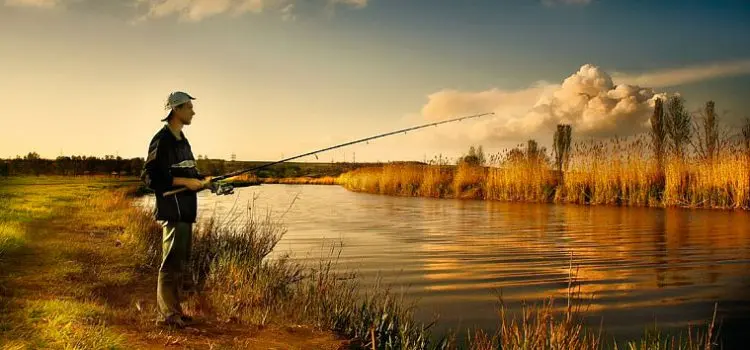
Once on an unfamiliar body of water, you have to look for a promising place for fishing, and this is not at all easy. Although it does not just happen to novice fishermen, but experienced fishermen will be able to quickly identify promising places by the nature of the movement of water in the reservoir. If this is a pond and the movement of water is limited by gusts of wind, then it is somewhat more complicated here. In this case, completely different criteria for determining the places of concentration of fish come into force.
How to choose a place for fishing on the river
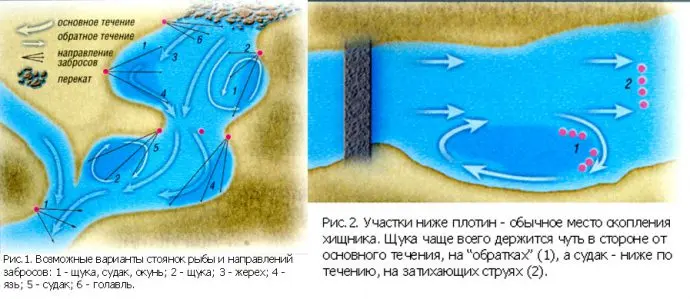
On the river it is much easier to find a catchy place that may differ from the general background or stand out against it. If the river is winding, then it is very easy to determine the nature of the river bottom on it, based on the pattern of the coastline. As a rule, cliffs are clearly distinguished on such rivers, near which the river can have optimal depths, where you can find most of the species of fish leading a benthic lifestyle. On winding rivers, the nature of the water flow depends on the size of the bends, and the depths can be determined by the color of the water.
Promising places for fishing on the river
They can be bays, oxbow lakes and bends. The outer banks of the bends form cliffs, where there are the deepest places, and the inner banks form shallows. In narrow sections of the river, where there are weak currents, deeper places are noted than in wide ones. In areas of rifts, it is easy to determine a deeper place by the color of the water, which in such places has a darker color. Downstream, if you go from the rift, the so-called whirlpools, or deep pits, are formed, where there are certainly larger fish and predators. Weaker current on stretches than on rifts. The depth of the reaches is more constant and can smoothly change from the banks to the midstream, where the fastest current is present.
On small rivers
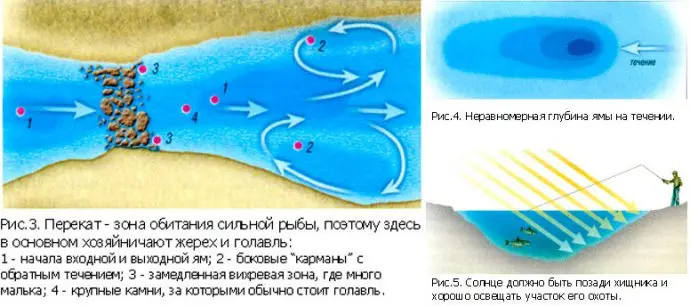
On small rivers, catchable places can be found in pits, on narrow rivers – places where the channel widens, as well as bays; on slow-flowing rivers – narrowing of the channel, places of rifts and channels, and on fast-flowing rivers – floods and bays; on deep rivers – the boundaries of depths and shoals, channels and “furrows” that separate the shoals from the coast, as well as at the border of algae. Fish can be found near the blocks of soil, which are washed into the water near the cliffs.
Places where cattle gathered for a watering place in the evenings were always considered promising. The fish at this moment keeps closer to the border of the turbidity that the animals raise. Of particular interest are places littered with snags or snags. At the very top of the pool, where the current breaks from the rift, large individuals of fish, as well as predators, stay. A little further, where the current is not so strong, fish such as ide and chub like to spend time. The middle of the pool and its edges are occupied by other types of fish.
It is not necessary to pass by the rivers, where reverse currents prevail. They are usually located behind various obstacles that change the direction of movement of the bulk of the water. The smaller the distance between the forward and reverse currents, the more interesting the lure for the fish.
Not a bad place for fishing can serve as ravines with thickets of trees and bushes that hang over the water. Shoals, which rarely go into depth, can also be effective.
How to choose a fishing spot on a lake or reservoir
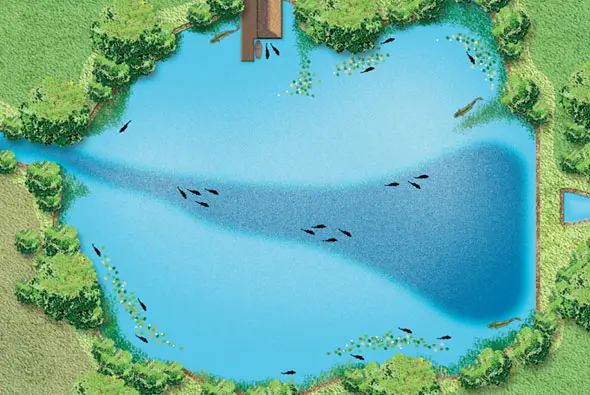
Fish everywhere, on any reservoirs, chooses characteristic places, which are sometimes hidden under the water column. This is especially true for lakes and reservoirs, but even here, if you look closely, you can easily find the favorite places for fish. In reservoirs with dense vegetation, the fish can be in the “clearings” or in the windows of clear water. She does not mind stopping at islets that have a slight thicket of algae. As for reservoirs, fish constantly migrate in them along pits, ravines, along edges and dumps, especially if there is a current in such places.
Determining the bottom topography
If you are very careful, the bottom topography can be determined by the pattern of the riverbed and the presence of one or another vegetation. Plants such as hornwort, urut or villain can grow at depths of more than 4 meters. Water lilies grow at depths of up to 3 meters, capsules grow a little deeper, okuga and reeds grow at depths of up to 2 meters, and a plant such as horsetail has chosen depths of up to 1,5 meters. Coastal plants such as cattail and sedge grow at depths of up to 1 meter. At depths of up to 6 meters, algae, invisible to fishermen, grow, called “water moss”.
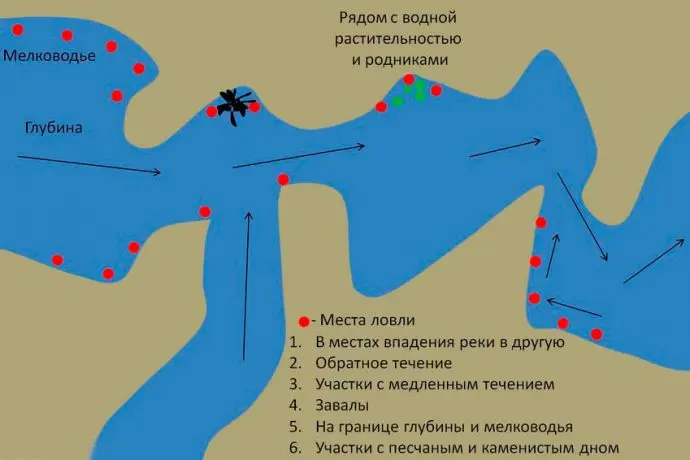
Floating plants such as duckweed and pemphigus can be found on ponds, which can indicate the direction of the prevailing winds.
Water level fluctuations
Such conditions significantly affect the life of fish and other organisms. An increase in the water level can contribute to the departure of fish from their usual parking places, which entails the cessation of biting. This, in turn, can lead to the fact that the biting on spills will increase, as it rushes there in search of food.
When the water level drops, the fish may become anxious and refuse the bait offered to it. Larger fish roll downstream, leaving their usual places and shallow rivers.
If the decrease in water is very slow, then the fish may not respond to such conditions. She settles in her usual places and actively eats at the same time. During this period, you can catch both small and trophy.
Effect of weather on fish concentrations
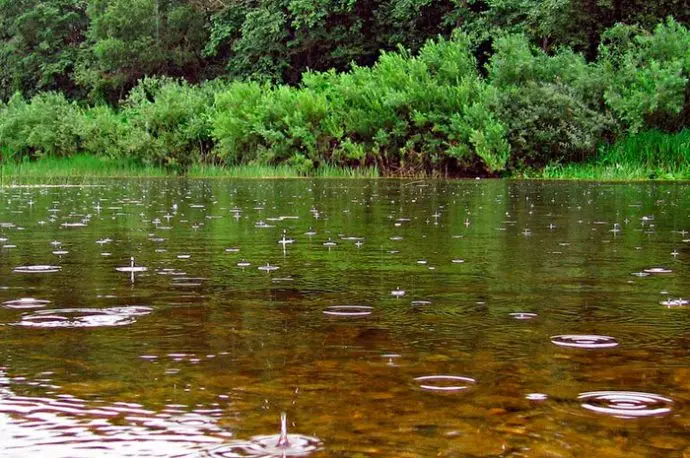
Ambient temperature, atmospheric pressure, at a constant water level, significantly affect the effectiveness of fishing. With weather changes, as well as with steady weather, fish can bite in different ways. It was noticed that the fish begins to actively feed before a thunderstorm or during rain, and after the rain and thunderstorm stop, it also stops pecking. Changes in natural conditions affect the effectiveness of fishing not only in summer, but also in spring, autumn and winter. Even with changes in wind direction, fish activity changes.
Experienced anglers use the wind to find a catch. For those who hunt bream, silver bream, crucian carp and carp, it is important to know that the wind, sending waves to the shores, brings these fish to the feeding place. The fact is that the waves choose various living creatures from the coastal zone and carry it from the coast to the depth. In such places, feeder gear or simple “donks” should be used. Effective places in this case are located on capes located parallel to the surf.
During very hot periods
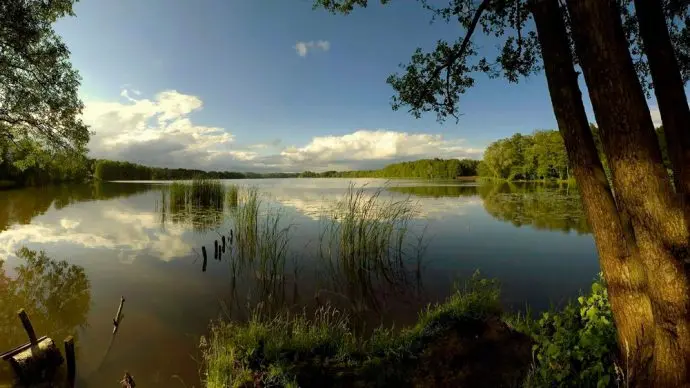
At such a time, the fish goes to a depth where it feels more comfortable, and therefore it is better to use bottom gear. In reservoirs that do not have deep places, fish can stop pecking at all, both during the day and at night.
In the heat, fish, like humans, are looking for places where direct sunlight does not penetrate. Such gear can be places located in the shade of coastal bushes or trees. At the same time, fishing can become productive in the early morning or late evening. During the daytime, the best places may be deep holes where the fish wait out the elevated temperatures, but this does not mean at all that the fish will actively bite.
In summer, the fish can spend a lot of time in algae thickets, and in the evening, when the sun has almost set, it moves closer to the shallows, where the water cools faster and is saturated with oxygen.
Fish that live in stagnant water, in hot weather, stay closer to the springs, where colder water mixes with warm water. Lake fish can be found in tributaries that supply fresh water to the lake. In such tributaries, the water is in motion, and therefore it is perfectly saturated with oxygen.
In conclusion, we can say that this is not much of the information that deserves attention and which is based on many years of observations by experienced fishermen. The main thing is that, having arrived at the reservoir, not just take and cast fishing rods, but carefully study the reservoir. Any visual information can be useful here, if used correctly, and this will certainly lead to a positive result. It can be not only material pleasure, but also psychological, which will lead to the appearance of positive emotions and the understanding that the day was not in vain.
Finding a fishing point and choosing a distance. Fishing with bottom gear.
Preparation of a place for catching carp.









